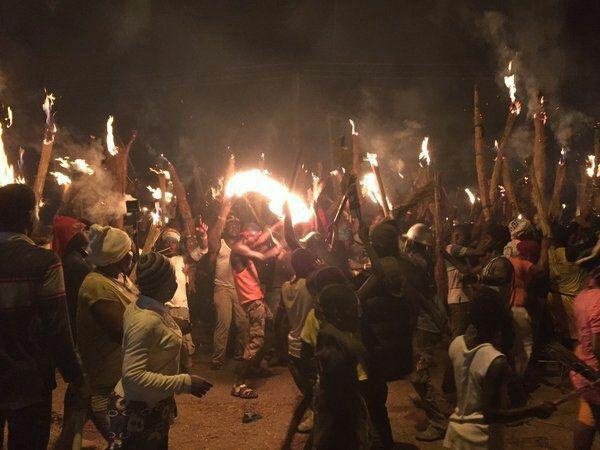ACHIEVEMENT 4 BY @SIXTHSON, TASK: APPLYING MARKDOWNS
THE FIRE FESTIVAL
Many festivals are celebrated among the Dagbon people. The Damba festival, The Fire Festival "Bugum Chugu", "Chimsi Chugu" and "Konyuri Chugu" are all celebrated to mark important events in history. All these festival are occasions I enjoy very much but I would like to share only my experience of the Bugum Chugu literally meaning The Fire Festival.
The following table gives a list of the months and corresponding English names
| Name of Festive Month in Dagbani | Their English counterpart |
|---|---|
| Bugum | January |
| Damba | March |
| Konyuri chugu | October |
| Chimsi | December |
HOW IT ALL BEGAN
Many years ago lived a king of the Dagbon Kingdom, whose name has been lost in history, who had a particular son he loved very dearly. It was said that the son went out to play with his friends and after some time he laid down under a tree and fell asleep. The other children without noticing him went home when it was getting dark. At the palace during the whole time, the king thought maybe the child was with his mother, the queen. In the same vain, the queen thought that maybe the child was with the king. I was until after supper that the they realized that son was missing.
As the saying goes in Dagbani
" Naawuni ti kabigi a gbali, o ni wuhi a a ni y3n kpahi sh3m"
~ translated If God breaks your leg, he will surely teach you how to limp
The King gathered his "Sapashinnima" literally meaning warriors to go out and search for his son because he couldn't find him. The whole village followed after the warriors who were also following after the king. It was after supper, meaning it was at night and so they all lit pieces of torches to illuminate their way and they searched for the boy.
Eventually, the boy was found under the tree where slumber overtook him. Then the King decreed that the tree was an evil tree and he threw his torch at the tree and the rest of his follower did same.
The above extract is what is believed to be the origin of the festival. Others argue that the root of the festival stems from an islamic origin. And associate it with prophet Noah but this is not regarded to be true because the Dagbon people are not descendants of arabs.
HOW IT IS CELEBRATED
The festival itself is celebrated on the night of the tenth day after supper. During supper the people cut morsels of food and pieces of meat and keep them on the walls of their house. This act means that the people are inviting the spirit of their ancestors and their gods. Everybody gathers at the chief's palace. The chief is the first to lit his torch and accompanied by the "wulaannima" meaning elders and the rest of the people behind them and he throws his torch at the tree and then he goes back to this palace. The rest of the people also light their torches after that, the beat the "gongong" drums and they dance "Ziem" as they also move along to the tree. They throw their torches at the evil tree as well and they continue their dancing of "Ziem" into the night. "Ziem" is a dance of the people of Dagbon. It is a dance for "sapashinnima" meaning warriros when they are going for war. "Ziem" is also played when the people are doing communal labor.
I already mentioned that with torches made from long straw of grass. Other tools they use in the celebration of this festival are cutlasses, guns and any other farming tool. These tools are meant to show a sense of the people searching through the bushes which stems from the original story. The people will dress like warriors to signify the warriors the chief assembled for the search.

_locator_map.png)



You've got a free upvote from witness fuli.
Peace & Love!
thnaks
You have been verified for this task. Please proceed to the next
R2
thanks boss
Please see my achievement 5.1 post here
https://steemit.com/hive-172186/@sixthson/achievement-5-task-1-by-sixthson-review-steemworld-org